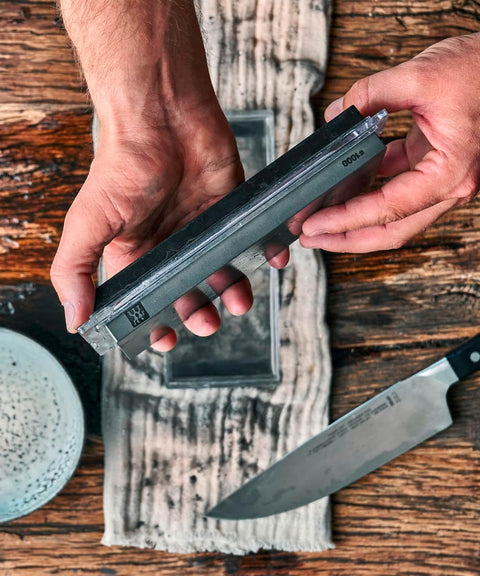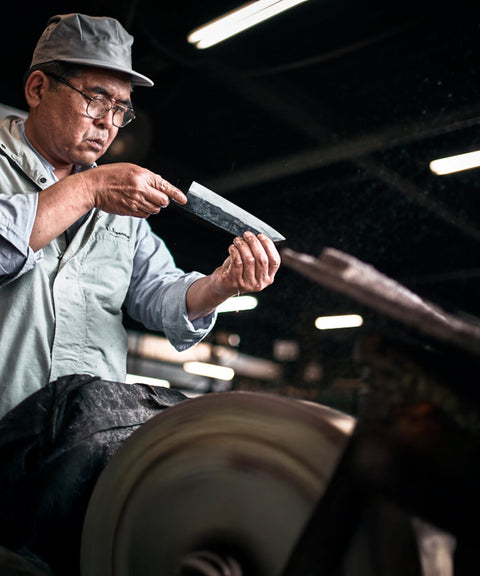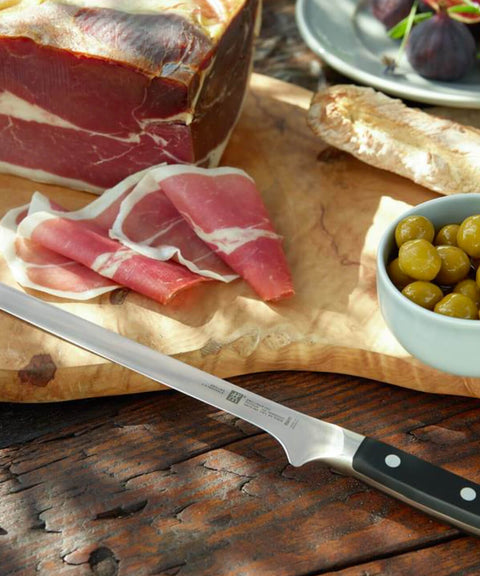
Complete guide to keeping it always sharp
Japanese knives are synonymous with precision, elegance and quality , but maintaining that quality requires special care. Knowing how to care for a Japanese knife will not only prolong its lifespan, but will also ensure that it continues to deliver optimal performance with every cut. In this guide, we explain step by step how to care for your Japanese knife and tell you why it is essential to have a high-quality sharpening stone .
1. Proper cleaning: Protects the edge
One of the most common mistakes is cleaning Japanese knives incorrectly. You should always:
- Hand wash with warm water and a mild detergent. Never use the dishwasher as it can damage both the blade and the handle, since if they are true professional knives , they are handmade.
- Dry the knife completely after washing it to prevent rust, especially if you have a carbon steel knife.
Tip : Use a soft microfiber cloth to dry the blade to avoid any scratches.
2. Safe knife storage: Keep the blade protected
Proper storage is key to preserving the sharpness of the edge:
- Knife Blocks : Protect blades from wear and tear and keep knives organized.
- Magnetic holders : These are a great option if you are short on space in the kitchen, but make sure the blade doesn't hit the surface when you place it.
- Protective covers : If you don't use a block or stand, use covers to keep the sheets protected from accidental bumps.
Expert Tip : If you store your knives in a drawer, use a sheath to prevent the blade from coming into contact with other utensils.
3. Regular sharpening with stones: The secret of a sharp knife
A well-maintained Japanese knife needs regular sharpening. Sharpening stones are the best option to keep the edge in perfect condition:
- When to sharpen your knife? It depends on the use, but it is recommended to sharpen every 2 or 3 months if you use it daily.
- Which sharpening stone to choose? Japanese medium grit stones (1000-3000) are perfect for regular sharpening, while fine grit stones (5000-8000) are ideal for honing the edge and keeping it looking like new . Explore our Japanese sharpening stones here .
Tip : To achieve perfect sharpening, maintain a constant angle of approximately 15-20 degrees when sliding the blade over the stone.
4. Proper use: Every knife has its purpose
A Japanese knife is designed for specific tasks and it is important to respect its purpose:
- Santoku and Gyuto Knives: Ideal for cutting meat, vegetables and fish. See Santoku knives here .
- Avoid using knives for tasks such as cutting bones or frozen foods , as this can damage the edge or even break the blade.
Tip: Always use a wooden or plastic cutting board to protect the edge of your knife. Glass or stone boards can quickly dull the blade.
5. Avoid humidity: A silent enemy
Moisture is one of the biggest enemies of Japanese knives, especially those made of carbon steel:
- Thoroughly dry the blade and handle after each use to prevent rust.
- Avoid leaving knives on wet surfaces or in the sink .
Tip: If you have a carbon steel knife, apply a little mineral oil to the blade after drying it for extra protection against rust.
Conclusion
Caring for a Japanese knife isn't just a matter of maintenance, it's a way to ensure your investment pays off for years to come. A well-maintained knife is not only more efficient, but also safer. Remember that sharpening your knife regularly with a suitable Japanese sharpening stone is key to maintaining its edge. Discover our best -selling sharpening stones here and ensure your knife is always ready to deliver precise cuts.









